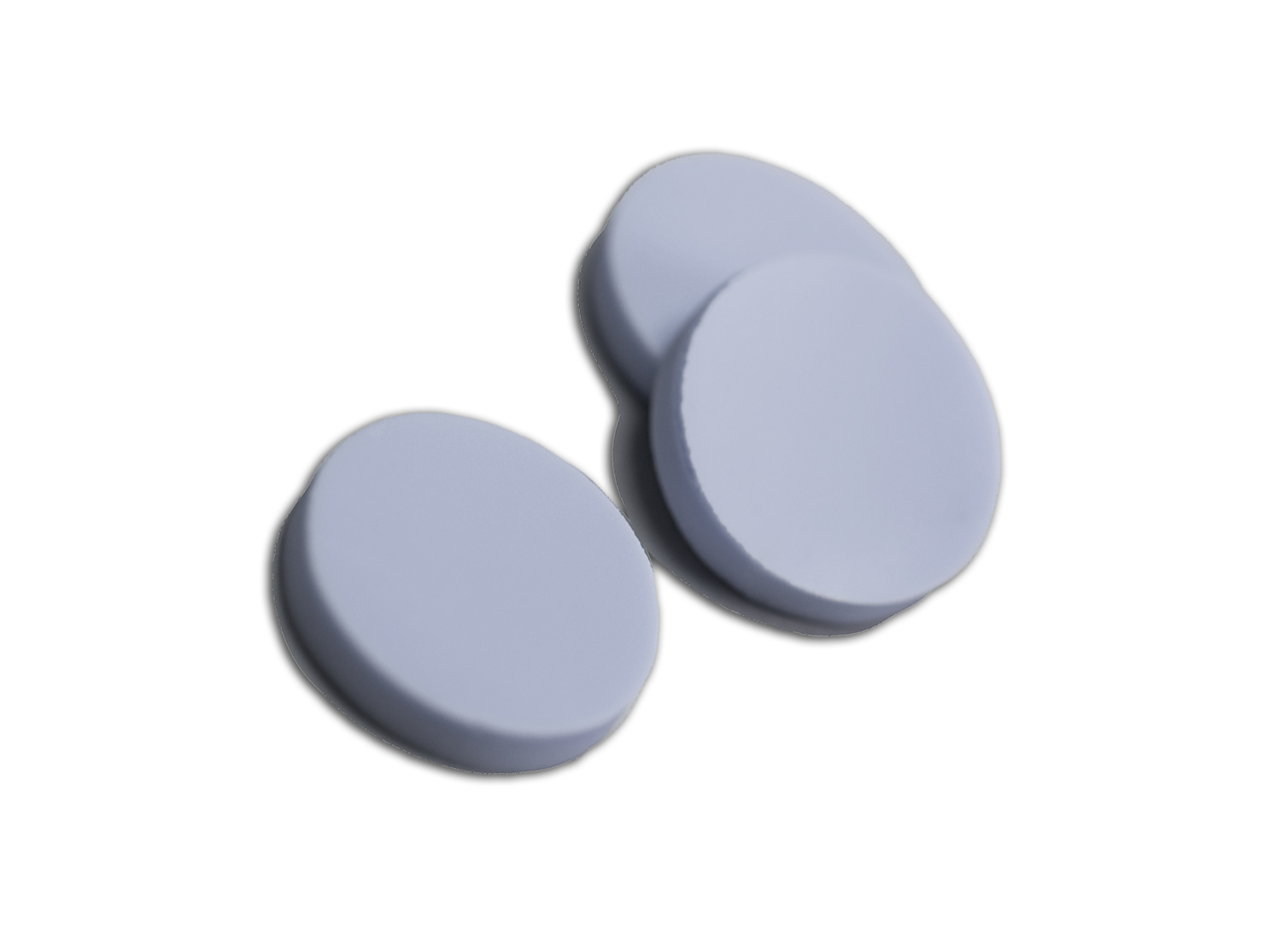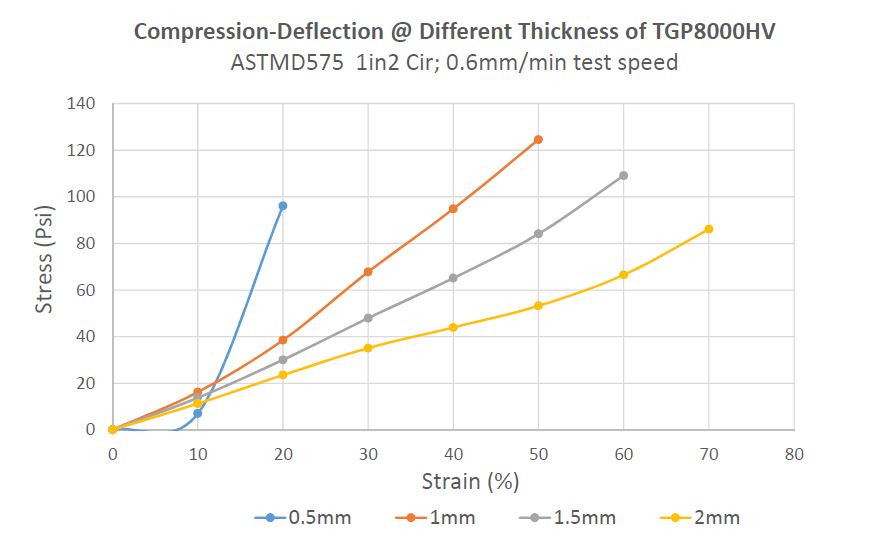TGP 8000HV | Thermal Gap Pad
- 0.2 Thermal Impedance
- 8.0 Thermal Conductivity
- High Breakdown Voltage
Product Description
Honeywell's TGP8000HV is a Thermally Conductive Gap Pad which offers a good combination of low thermal impedance, high breakdown voltage and ease of use across multitude of applications. The naturally tacky property avoids the use of additional adhesive which could inhibit thermal performance.
Honeywell's TGP8000HV Thermal Gap Pads (TGP) have the lowest Thermal impedance out of all the entire thermal gap pad portfolio, plus higher breakdown voltage than the plain TGP8000 version. This and the hardness (30 vs 60 on shore00) are the main differentiating factors between the two. Their ultra-high compressibility enables low stress and excellent conformity to mating surfaces. They are designed to minimize thermal resistance at interfaces, and maintain excellent performance through reliability testing.
Honeywell's TGP8000HV ,in addition to High breakdown voltage, exhibits low oil bleeding and outgassing along with low hardness. The bleeding will depend on the pressure differential, the amount of uncross-linked silicone in the pad and the molecular weight of those unlinked chains. Available formats for TGP8000HV include standard sheets and custom die-cut parts that are available in a thickness range from 0.5mm to 5.0mm.
Technical Specifications
| General Properties | |||||
| Color Color The color | Gray | ||||
| Film Thickness | 0.5 - 5 mm | ||||
| Specific Gravity Specific Gravity Specific gravity (SG) is the ratio of the density of a substance to the density of a reference substance; equivalently, it is the ratio of the mass of a substance to the mass of a reference substance for the same given volume. For liquids, the reference substance is almost always water (1), while for gases, it is air (1.18) at room temperature. Specific gravity is unitless. | 3.5 | ||||
| Electrical Properties | |||||
| Breakdown Voltage Breakdown Voltage Breakdown voltage is the minimum voltage necessary to force an insulator to conduct some amount of electricity. It is the point at which a material ceases to be an insulator and becomes a resistor that conducts electricity at some proportion of the total current. After dielectric breakdown, the material may or may not behave as an insulator any more because of the molecular structure alteration. The current flow tend to create a localised puncture that totally alters the dielectric properties of the material. This electrical property is thickness dependent and is the maximum amount of voltage that a dielectric material can withstand before breaking down. The breakdown voltage is calculated by multiplying the dielectric strength of the material times the thickness of the film. | 8000 V | ||||
| Volume Resistivity Volume Resistivity Volume resistivity, also called volume resistance, bulk resistance or bulk resistivity is a thickness dependent measurement of the resistivity of a material perpendicular to the plane of the surface. | 6.5x1015 Ohms⋅cm | ||||
| |||||
| Mechanical Properties | |||||
| |||||
| Thermal Properties | |||||
| Thermal Conductivity Thermal Conductivity Thermal conductivity describes the ability of a material to conduct heat. It is required by power packages in order to dissipate heat and maintain stable electrical performance. Thermal conductivity units are [W/(m K)] in the SI system and [Btu/(hr ft °F)] in the Imperial system. | 8.0 W/m.K | ||||
| Thermal Impedance | 0.2 °C·cm²/W | ||||
| UL 94 Rating UL 94 Rating Flammability rating classification. It determines how fast a material burns or extinguishes once it is ignited. HB: slow burning on a horizontal specimen; burning rate less than 76 mm/min for thickness less than 3 mm or burning stops before 100 mm V-2: burning stops within 30 seconds on a vertical specimen; drips of flaming particles are allowed. V-1: burning stops within 30 seconds on a vertical specimen; drips of particles allowed as long as they are not inflamed. V-0: burning stops within 10 seconds on a vertical specimen; drips of particles allowed as long as they are not inflamed. 5VB: burning stops within 60 seconds on a vertical specimen; no drips allowed; plaque specimens may develop a hole. 5VA: burning stops within 60 seconds on a vertical specimen; no drips allowed; plaque specimens may not develop a hole | V-0 | ||||





